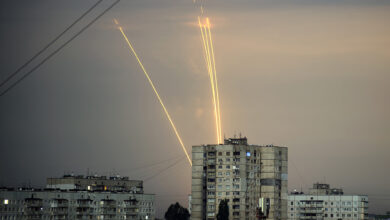
Novovorontsovka, Ukraine: The changing shape of Russia’s campaign in Ukraine can be seen here along the banks of the Dnipro River.
The eastern side has been controlled for weeks by Russian forces – but now they are pushing to seize the western side. The prize: To control the strategically significant river that winds from Russia through Belarus and Ukraine to the Black Sea.
After the failure of Russia’s fierce first assault, Moscow has shifted to a grinding and more methodical strategy to expand control of the eastern regions of Luhansk and Donetsk while carving out a territory along Ukraine’s southern coast.
The impact is visible in the small town of Novovorontsovka. A handful of Russian tanks are about a kilometer away across the river, pushing and probing – but so far kept at bay by Ukrainian forces.
But the signs of destruction and death are everywhere. A small motorboat sits damaged on the river bank. On April 7, four civilians were killed by Russian fire after more than a dozen got on board to flee the Russian occupation.
And more civilians are fleeing. On Thursday morning, a group of women gathered outside Novovorontsovka, having escaped Russian-controlled territory.
“We ran, ran, early in the morning,” a woman named Luda told CNN. “They didn’t let us out. We’re shields for them.”
The Russians took whatever they needed, including cars, she said. They drew Zs on everything, Luda said, a reference to the pro-war symbol that has been emblazoned on Russian military equipment.
“They say they’ve come to liberate us, these aggressors,” Luda added. “They say America is fighting here, but using the hands of Ukrainians to do it.”
Nearby, despite the threat of rocket fire, Ludmilla was raking the soil to plant onions. Her children have left, she said, but she’s staying behind with her 80-year-old mother.
Even though the windows of her home have been blown out, Ludmilla said she won’t leave.
“I’m here until victory,” she said.




